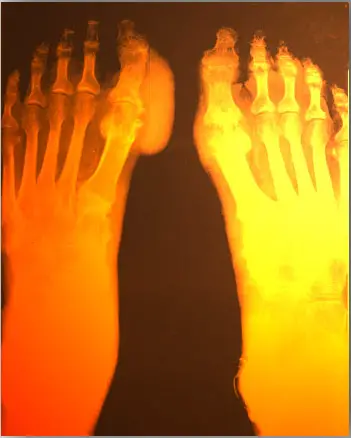Gout Diagnosis
Gout Diagnosis
Some Doctors may have trouble with Gout Diagnosis.
There are many symptoms involved with gout that are similar to various other forms of arthritis, such as Psoriatic Arthritis and Rheumatoid Arthritis.
The most acurate way to measure or test for Gout is by a blood test measuring for higher than normal Uric Acid levels, or a most unpleasant way is by using a needle and drawing out fluid ( Arthrocentesis ) from an inflamed joint and testing this fluid under a microscope.
A complete family medical history check should be done as well as a physical check.
If the doctors is a little more savvy with symptoms, he or she may look for Tophi
( deposits of crystallised uric acid that has hardened ) on the outside of the ears or joints like the elbow and heels where Tophi ( sodium Urate Crystals deposit in a mound ) and possibly take samples from these and look for the crystal forms.
If there is a obvious sign of damage or an attack then the use of X-rays should be on the agenda to see how much of the joint is damaged, also X-Rays can show up deposits of Tophi Crystals that may not have shown up on other forms of examination. The damage of the joints cant be traumatic,leading to excruciating pain.If you are not happy with your current medical professional's opinion or lack of opinion on your gouty diagnosis, then simply change doctors or specialists for a second opinion. The wrong diagnosis can lead to years or pain and further damage to joints and your organs. Gout can have horrific consequences if you do not address the problem.
"“The best medicine I know for rheumatism is to thank the Lord that it ain't gout!” ' Josh Billings '

Recent Articles
-
Tony
May 08, 24 08:57 PM
Hi Peter, I am a physician, had my first Gout episode last week. I was surfing through the web and happened to come across your site. I am impressed by -
What is it about Cherries?
Aug 25, 21 03:59 AM
Allopurinol worked for me, but at the expense of adversely affecting my mood.I like cherries, but getting them every day of the year is a problem.I wondered -
ACV made my gout worse...
Apr 22, 20 07:19 AM
During my first gout attack, I was in so much pain that I desperately scoured the internet for alternative cures as the colchicine that I was prescribed








